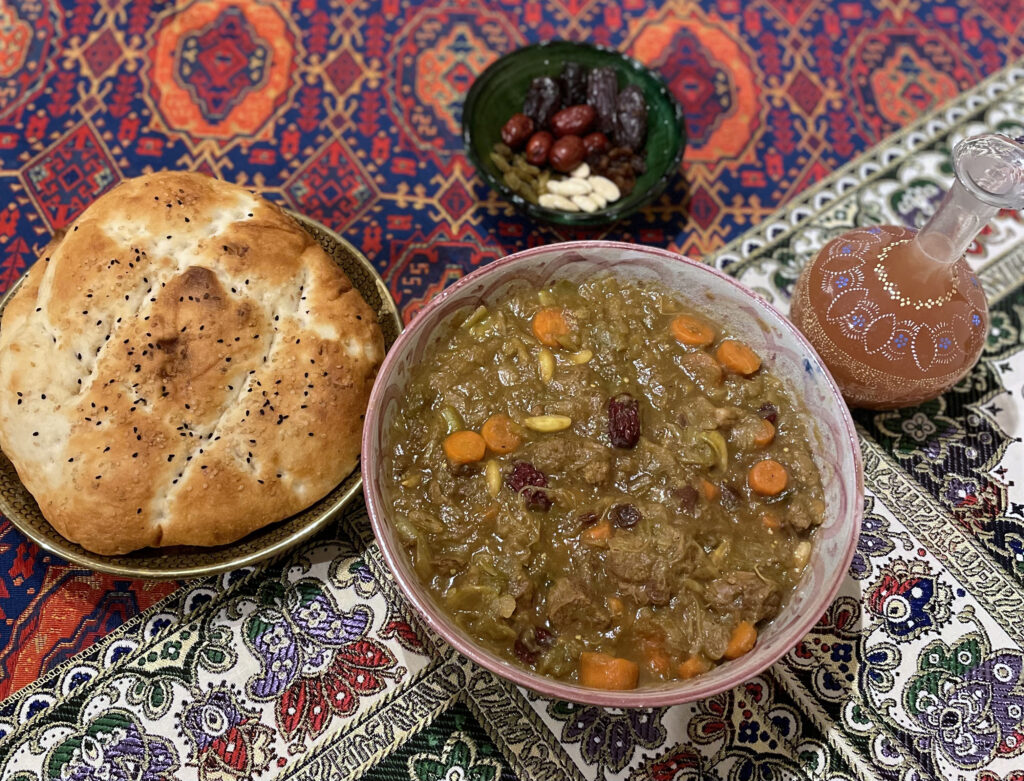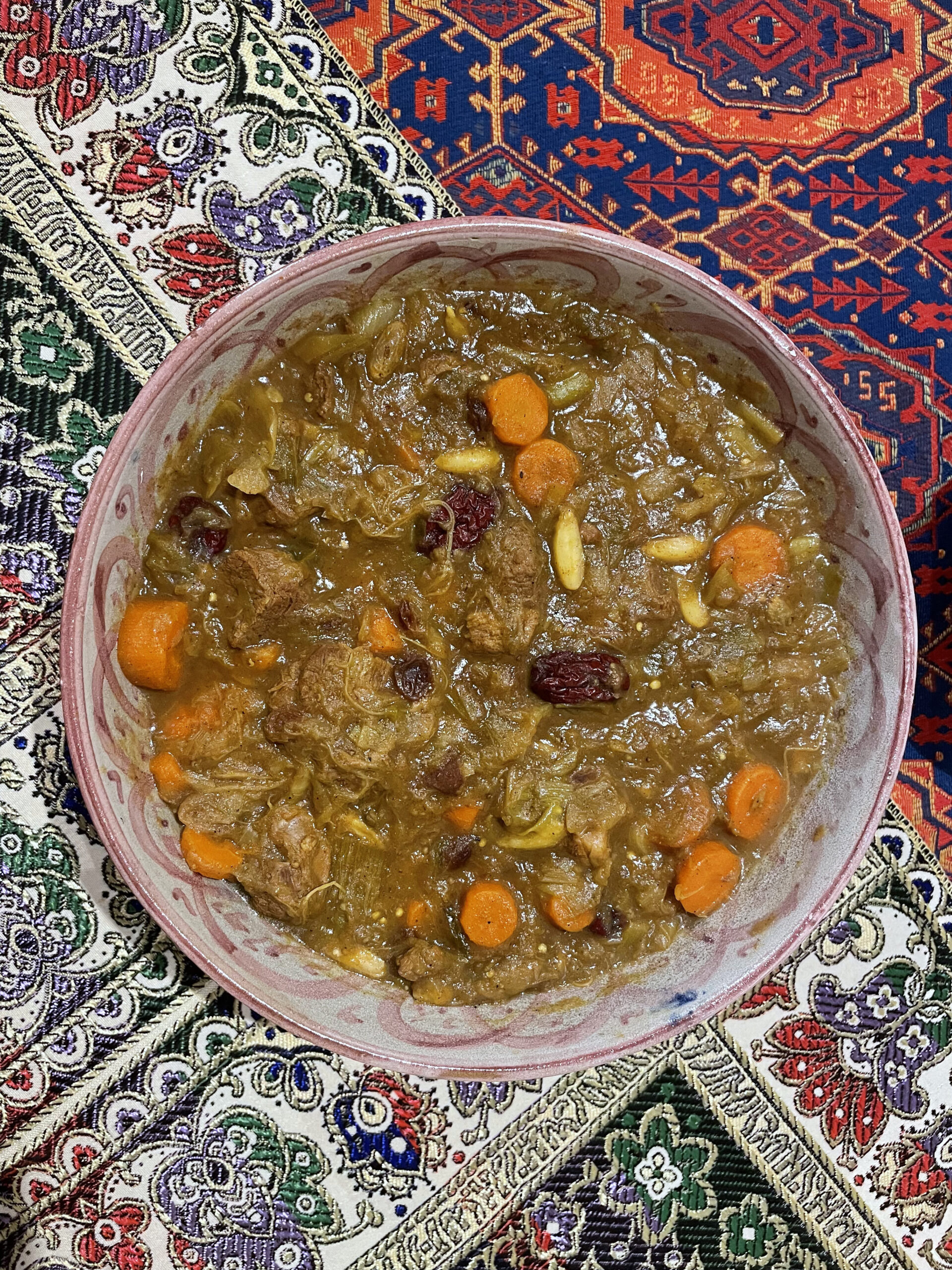Over three years ago, I posted a recreation of one of the most emblematic dishes of medieval Arab cooking, a vinegar stew known as sikbāj (سكباج), with both the dish and the name being a borrowing from Persia (sik, ‘vinegar’; bāj, ‘stew’). The recreation was based on a 10th-century Baghdadi recipe and though the result was flavoursome enough, the sourness of the vinegar was quite overpowering to the modern palate. However, everything deserves a second chance and so here’s another stab, this time using an Egyptian version of the dish from The Sultan’s Feast. It’s made with fatty lamb chunks and a range of herbs, spices and vegetables, including, agarwood, cassia, coriander, onions, leek, carrots, and aubergine, as well as, of course, the eponymous vinegar, tempered with some dibs (date molasses) or honey. The dish is served with almonds, jujubes, dates and raisins sprinkled on top. The result could not have been more different from the first iteration; rather than the tart vinegary kick, there was now a more mellow sweet-and-sour overtone. Probably the biggest difference in the two preparations was the use of the home-made medieval grape-and-fig vinegar, instead of the plain vinegar of the first sikbaj. The recipes, themselves, call for ‘vinegar’ but it is very likely that then — just as now — the cooks would have selected the vinegar of their choice for any given dish, and so, who knows, maybe in this case a fruity vinegar would have been used. At least, that’s what I’d like to think! In any case, when sikbaj is on the menu again, I know which of the two recipes I’d go for…


